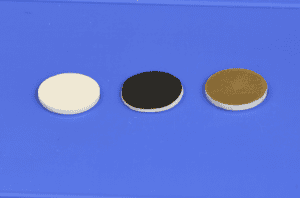
There’s a better way to build solid-state lithium batteries, scientists say. By studying the battery manufacturing process, researchers from the Massachusetts Institute of Technology and Upton, New York-based Brookhaven National Laboratory have eliminated a tiny (but crucial) contamination issue, which could cut down on the complexity in future battery designs.
Solid-state batteries are widely considered to be the next great thing in rechargeable battery design. With an energy capacity at least two times greater than traditional lithium-ion batteries with flammable liquid electrolytes, solid-state batteries are safer, as well as more efficient—a huge pair of selling points for electric consumer vehicles in particular.
So what’s stopping solid-state lithium batteries from fully revolutionizing the industry? There are two issues: conductivity, and instability where the materials join. The first is easy to explain: volatile liquid electrolytes allow electrons to move freely, which is more challenging within a solid material with less particle mobility.
We can explain the second issue through an analogy. Imagine you’re the ice cream bar maker at an ice cream bar factory. All day, you dip plain vanilla ice cream bars into a vat of lovely liquid chocolate. Then, someone says they’re changing your job, and from now on, you’ll be tasked with covering the ice cream with pre-made solid shingles of chocolate.
It’s clear that this approach is more difficult than dipping. It’s hard to achieve full coverage of the ice cream bars using pre-made chocolate pieces in this way; you run the risk of trapping a lot of air in between the chocolate layer and the ice cream. In a delicious treat, that’s not necessarily a huge problem, but in a battery, it can be—trapped gasses can affect what happens to all the materials they touch.
Battery designers use a couple of methods to combat these issues. First is a manufacturing technique called “sintering,” which involves heating materials until they soften and grow more pliable, but don’t melt the whole way through. This helps to close the gaps, literally, in making two solids conform to one another other. Second, they use softer coatings that help create a cleaner seal between the two solid materials.
In this new research, the scientists discovered that improving the former method could help to totally eliminate the latter—taking away an extra step in the manufacturing process, and the extra cost of materials required to add special coatings to the batteries. The secret, they say, is removing corrosive carbon dioxide (CO2) that is being trapped between the layers of battery materials during the sintering step.
“As a result, removing CO2 during sintering is necessary to obtain good contact at the [electrolyte] cathode interface without forming secondary phases. Sintering in O2 [oxygen] is ideal, yielding excellent chemical stability and low interfacial resistance,” the researchers explain in a paper published last month in the peer-reviewed journal Advanced Energy Materials.
The result is a clean seal that does not corrode, and the numbers are competitive with batteries that have interfacial coatings without that added step. The researchers say the gas swap is a simple change that should contribute only negligibly to the manufacturing of solid-state batteries.